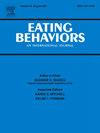Disordered eating among military adolescents presenting for annual health visits at a naval clinic
IF 2.4
3区 医学
Q2 PSYCHIATRY
引用次数: 0
Abstract
Introduction
The purpose of this study was to estimate disordered eating behavior (DEB) prevalence in military dependent adolescents, compare it to previous reports in the general adolescent population, and investigate whether obesity, sex and gender, or key military-specific demographics (parent in the military, parental active duty [AD] status, military branch, number of lifetime moves, number of parental deployments) are associated with higher DEB risk.
Methods
Retrospective cross-sectional study of military dependents aged 11–19 years seen in an adolescent clinic at a naval medical center for annual health maintenance visits. We manually abstracted body mass index, gender, sex, military demographics, and ChEAT-26 eating disorder screening results from electronic health records. We compared DEB prevalence to established estimates from the general adolescent population (p0 = 0.1) and estimated DEB risk by obesity, gender, sex, and military demographics.
Results
Of 92 participants, 49 % identified as male; 9 % had obesity, 63 % had an AD parent, and 81 % were Navy families. DEB prevalence was 13 %, no different from the general population. Obesity and having a parent in the Air Force were associated with higher ChEAT-26 score. There was no significant difference in DEB risk by gender or sex.
Conclusions
DEB prevalence in military-dependent adolescents is estimated at 13 %, similar to previous reports in the general population, and obesity is associated with higher DEB risk. Military dependent males may have comparable DEB risk to females, reinforcing the importance of universal DEB screening in adolescents, and of changing the narrative of who is at risk for DEB.
求助全文
约1分钟内获得全文
求助全文
来源期刊

Eating behaviors
Multiple-
CiteScore
4.20
自引率
3.60%
发文量
65
审稿时长
60 days
期刊介绍:
Eating Behaviors is an international peer-reviewed scientific journal publishing human research on the etiology, prevention, and treatment of obesity, binge eating, and eating disorders in adults and children. Studies related to the promotion of healthy eating patterns to treat or prevent medical conditions (e.g., hypertension, diabetes mellitus, cancer) are also acceptable. Two types of manuscripts are encouraged: (1) Descriptive studies establishing functional relationships between eating behaviors and social, cognitive, environmental, attitudinal, emotional or biochemical factors; (2) Clinical outcome research evaluating the efficacy of prevention or treatment protocols.
 求助内容:
求助内容: 应助结果提醒方式:
应助结果提醒方式:


